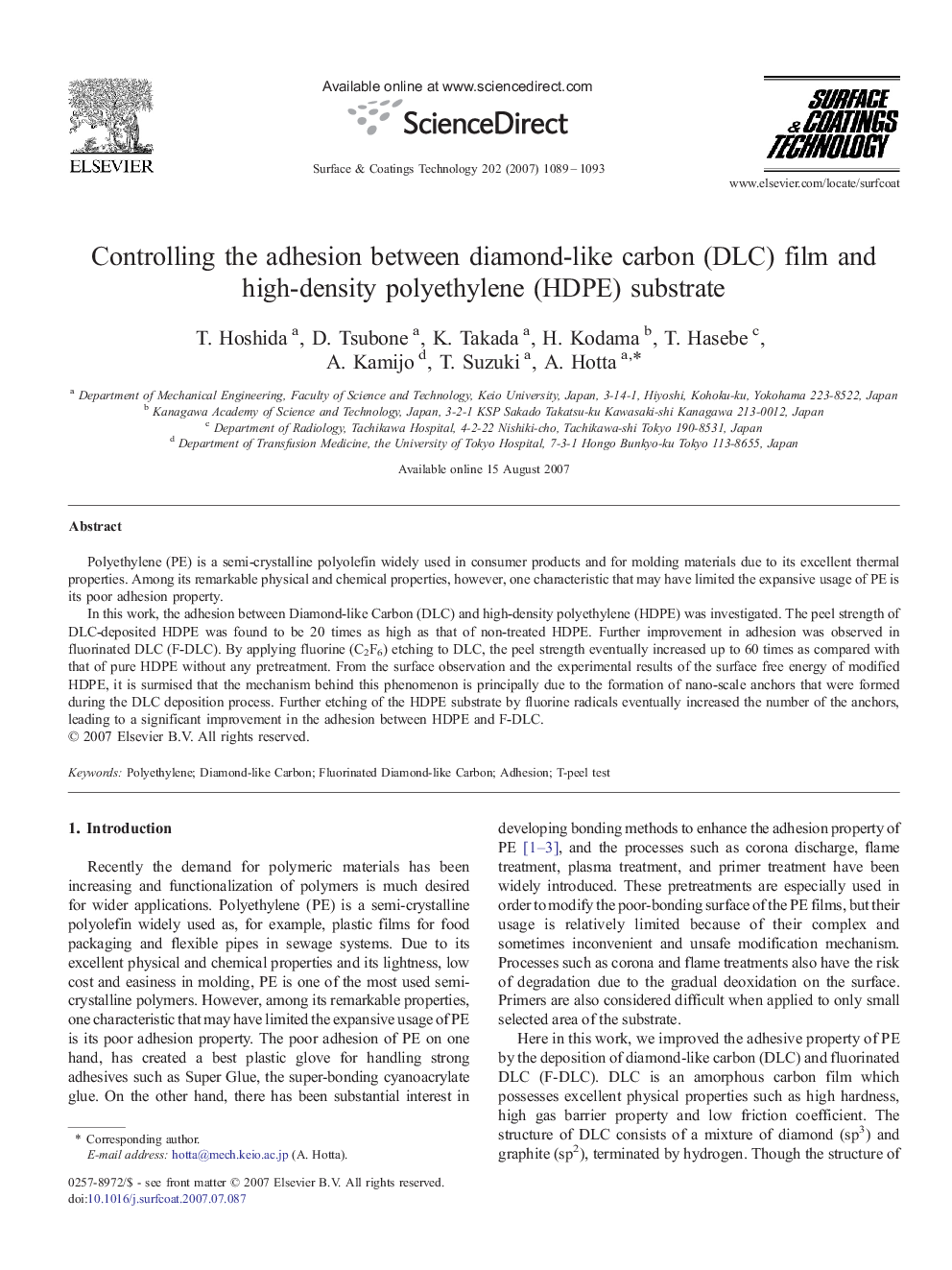| Article ID | Journal | Published Year | Pages | File Type |
|---|---|---|---|---|
| 1661717 | Surface and Coatings Technology | 2007 | 5 Pages |
Polyethylene (PE) is a semi-crystalline polyolefin widely used in consumer products and for molding materials due to its excellent thermal properties. Among its remarkable physical and chemical properties, however, one characteristic that may have limited the expansive usage of PE is its poor adhesion property.In this work, the adhesion between Diamond-like Carbon (DLC) and high-density polyethylene (HDPE) was investigated. The peel strength of DLC-deposited HDPE was found to be 20 times as high as that of non-treated HDPE. Further improvement in adhesion was observed in fluorinated DLC (F-DLC). By applying fluorine (C2F6) etching to DLC, the peel strength eventually increased up to 60 times as compared with that of pure HDPE without any pretreatment. From the surface observation and the experimental results of the surface free energy of modified HDPE, it is surmised that the mechanism behind this phenomenon is principally due to the formation of nano-scale anchors that were formed during the DLC deposition process. Further etching of the HDPE substrate by fluorine radicals eventually increased the number of the anchors, leading to a significant improvement in the adhesion between HDPE and F-DLC.
